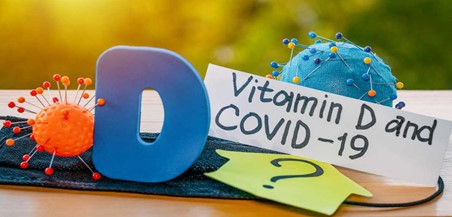Association of Vitamin D Status and Other Clinical Characteristics With COVID-19 Test Results
- Princess Lisa Cofie
- Nov 14, 2020
- 2 min read

Evidence of whether vitamin D deficiency is associated with COVID-19 infection and whether vitamin D treatment may help decrease the burden and spread of COVID-19 is lacking. Vitamin D deficiency is common, affecting nearly half the US population, with higher rates among persons with darker skin or reduced sun exposure, including persons living in higher latitudes in the winter, nursing home residents, and health care workers.
Sadly, COVID-19 also disproportionately affects this population as well. Meltzer et al., 2020, hypothesized that persons tested for COVID-19 would be more likely to test positive for COVID-19 if they had likely deficient vitamin D levels than if they had likely sufficient vitamin D levels. This multivariable analysis suggested that persons who are likely to have deficient vitamin D levels at the time of COVID-19 testing were at substantially higher risk of testing positive for COVID-19 than were persons who were likely to have sufficient levels.
Also, patients with deficient last vitamin D levels who did have increased treatment were not found to have increased risk for COVID-19 compared with patients with likely sufficient vitamin D status may suggest a protective effect of treatment. Although the meta-analysis suggests the benefits of vitamin D supplementation in people who are vitamin D deficient, it also reports smaller but statistically significant effects of supplementation even in people whose vitamin D levels are sufficient by current standards.
These findings suggest that randomized clinical trials with varying doses of vitamin D may be warranted in populations with and without vitamin D deficiency to understand if vitamin D reduces the risk of COVID-19. The low costs of vitamin D and its general safety, at least at doses of up to 4000 IU per day, support arguments for population-level supplementation, perhaps for targeting groups at high risk for vitamin D deficiency and/or COVID-19. African American and Hispanic populations in the US may be particularly important populations to engage in studies of whether vitamin D can reduce the incidence and burden of COVID-19.
Testing of vitamin D levels may be an important tool in guiding treatments, and the availability of low-cost home testing for vitamin D may be valuable given the benefits of social distancing in COVID-19. If vitamin D does reduce COVID-19 incidence, it is tempting to consider whether it might reduce COVID-19 transmission. Higher vitamin D levels correlate with lower interleukin 6 levels, which are a major target for controlling cytokine storm in COVID-19.
To the extent that it prevents infection, decreases viral replication, or accelerates viral clearance, vitamin D treatment might reduce spread. In conclusion, the findings of this study suggest a role of vitamin D status, based on the deficiency of levels and treatment, in the risk of COVID-19 infection. However, randomized clinical trials of interventions to reduce vitamin D deficiency are needed to determine if those interventions could reduce COVID-19 incidence.
See here, for more information: https://jamanetwork.com/journals/jamanetworkopen/fullarticle/2770157














































Comments